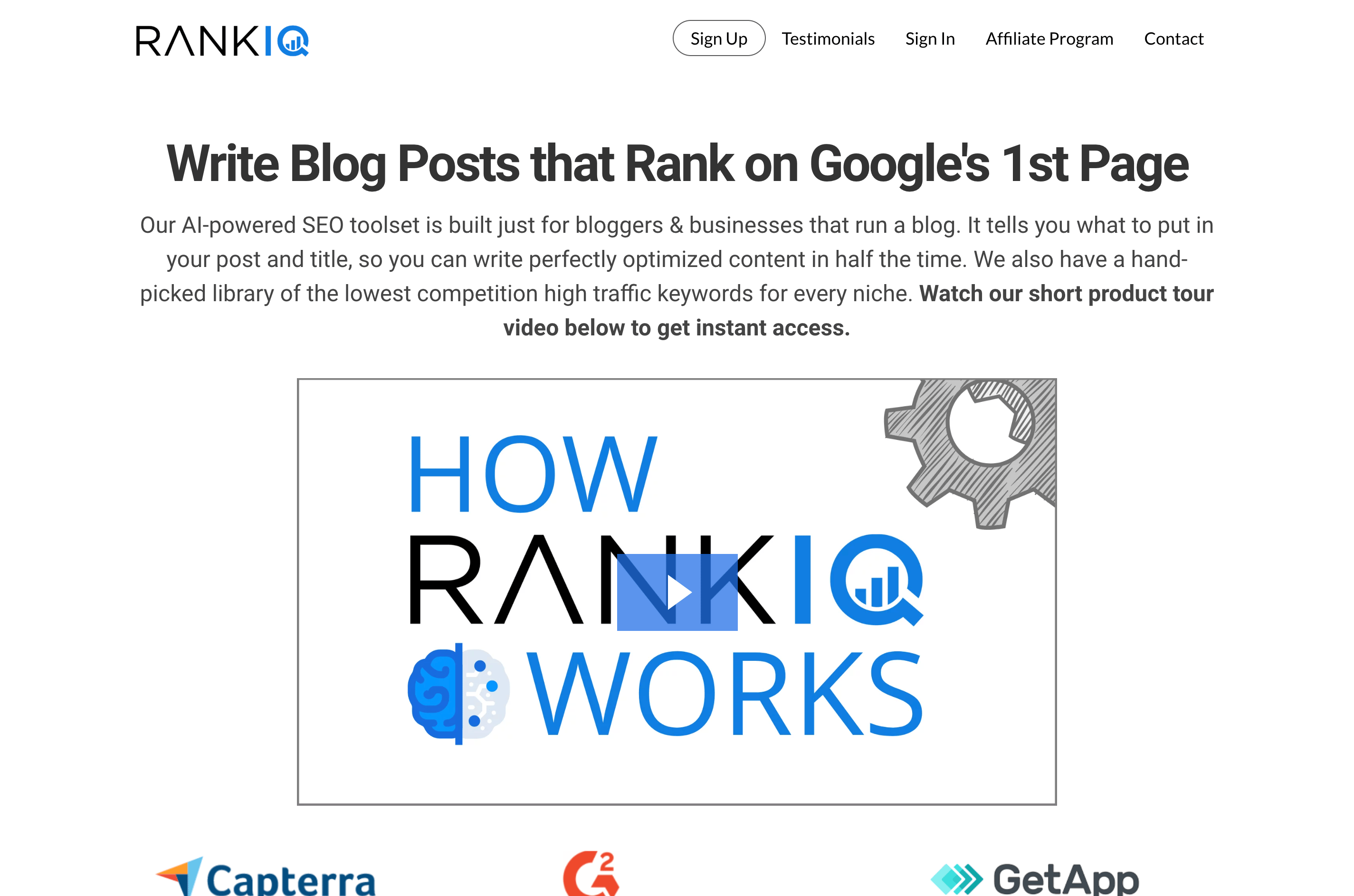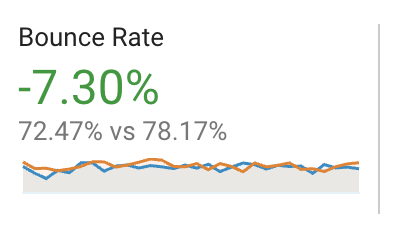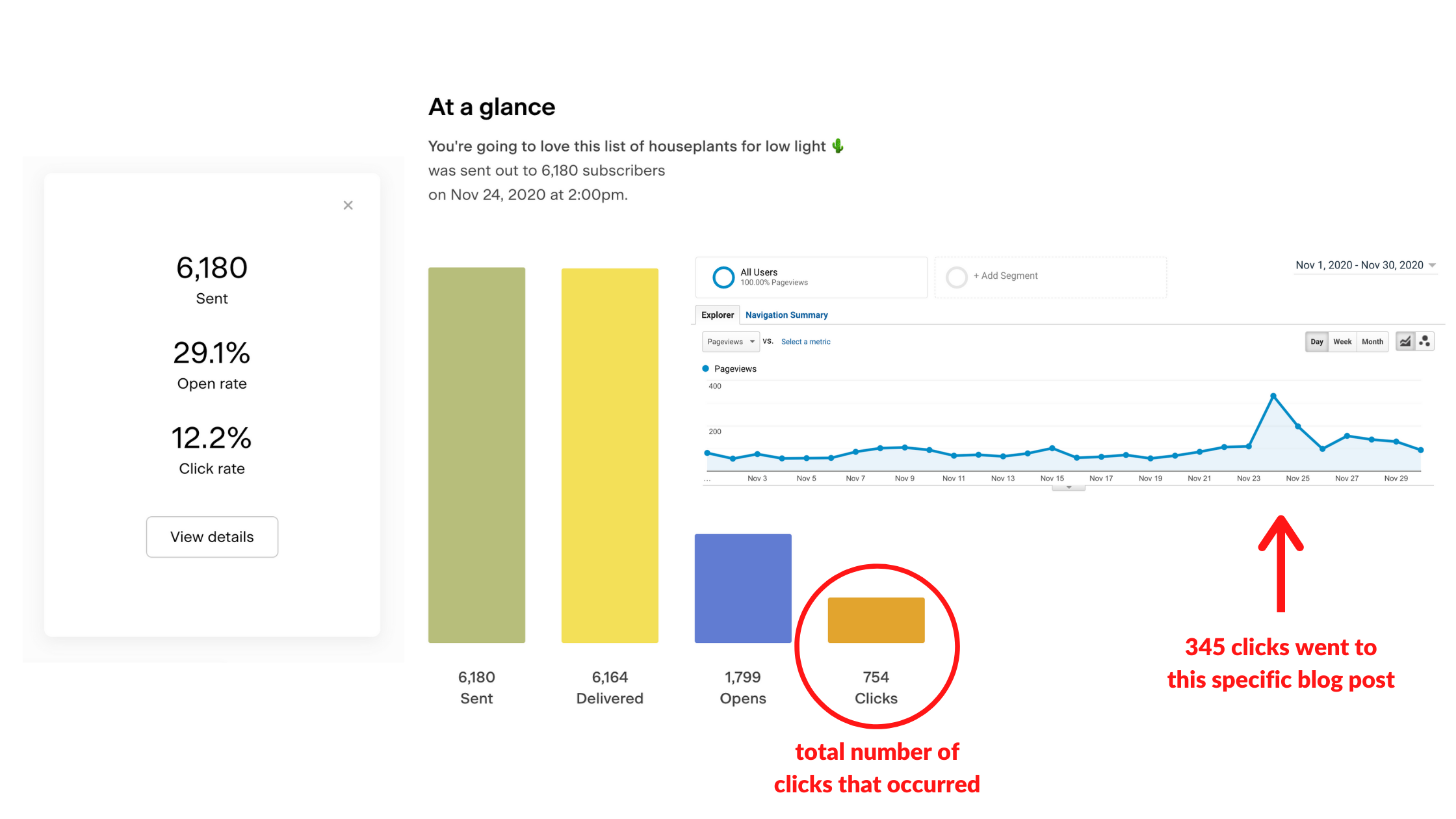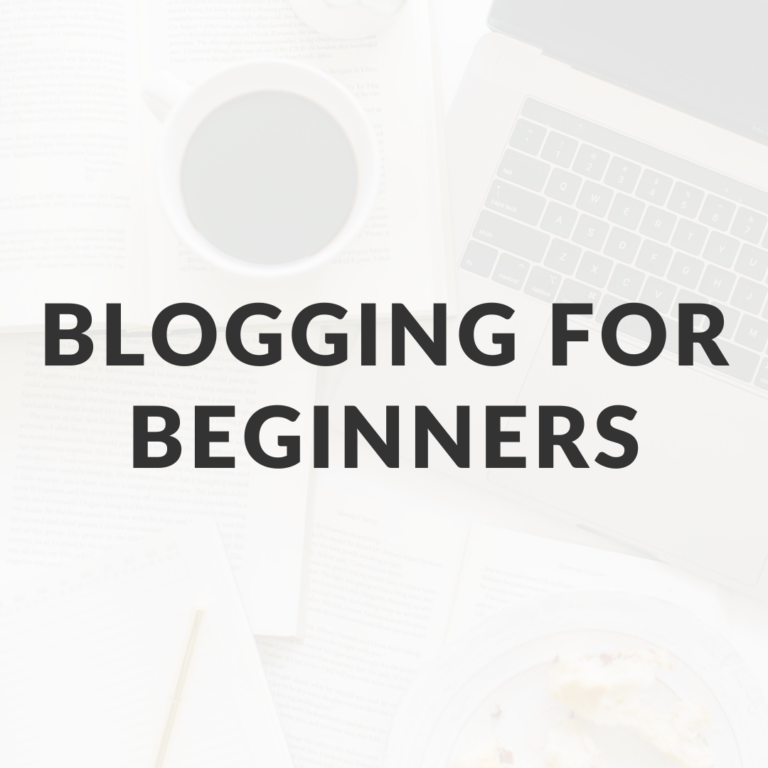How to Increase Website Traffic Organically
Sharing my list of effective SEO tactics that are simple and lucrative ways to increase website traffic. Use this list to improve your website and get organic traffic through Google.

Down below, I’ve listed my strategies for increasing website traffic in 2022. If you want to increase traffic to your website, then this guide is for you.
Before we get started, you should read more about search engine optimization and why it’s important for your online business.
Make sure you understand the following aspects of SEO to improve your chances of ranking on the first page of Google:
This post may contain affiliate links, which means I get a small commission if you purchase a product. I recommend products that I personally use and enjoy. Thank you!
How to Increase Your Website Traffic
It’s a lot of hard work to operate your own blog. With these blogging tips, you will see better SEO results. Now you’re ready to learn these proven ways to increase your website traffic. Let’s go over the best ways to increase your blog’s website traffic!
1) Set Up Google Analytics and Google Search Console
The first thing I want you to do is set up an account for Google Analytics and Google Search Console.
Both of these free tools are resources that can tell you a lot about how people find your site and what they do while they’re visiting your blog.
Related: How to Use the Google Search Console to Track Keyword Performance
2) Submit Your Website Sitemap
A sitemap lists all the URLs (or landing pages) within your website’s domain. It’s set up as an XML file that the crawlers can scan.
When you submit a sitemap to Google Search Console, it makes it much more likely that all the URLs within your site will be scanned quickly and efficiently.
Take a look a what Google has to say:
A sitemap is a file where you can list the web pages of your site to tell Google and other search engines about the organization of your site content. Search engine web crawlers like Googlebot read this file to more intelligently crawl your site.
3) Prioritize Google’s Mobile-First Index
These days, virtually every website has a mobile version and desktop version, and even a tablet version.
A few years ago, Google announced that the structure, the site speed, and the user experience of your mobile website will be prioritized first for search engine rankings.
You can see what devices are used to view your website in Google Analytics. Go to Audience -> Mobile -> Overview.
I’m going to share some tips for on-page SEO to help improve your mobile website too. Keep reading!
4) Understand Search Intent
When you hear the term search intent, what do you think it means? When we do an online search, we are hoping to learn something new or find a solution or buy a product.
There are a few types of search intent you can read more about.
There can be a lot of gray areas when it comes to search intent. After all, millions of searches happen on Google every day. Is it possible to know the intent behind every search performed by every single person?
Well, we can use Google to give us a few clues. If there is a particular keyword you want to use, plug it into Google and take a look at the first page results. What do you see?
Are the top results sharing tips or tutorials? Are they sharing a list of products to buy? Do you see them giving advice or providing a review?
Basically, what you see on the first page of Google for the keyword you want to use is your competition. How can you stand out from the competition but also speak directly to your target audience?
5) Keyword Research
Here is the free tool I use for keyword research: Ubersuggest.
My goal is to find keyword terms with search traffic potential. This will mean something different for every blogger depending on their industry and how much content they have that’s already ranking.
Here is what search traffic potential looks like for me:
- I have a small blog (less than 20 blog posts) and my niche is digital marketing, which can be highly competitive.
- Typically, I look for keywords that have an average monthly search volume of 1,000 – 2,000
- I also look for keywords that have low competition and are considered “easy” to rank for; Ubersuggest will tell you this
- Digital marketing is a broad topic so I dig into super niche topics: Pinterest marketing, Canva design tips, Facebook groups, and virtual assistant tips
There are other keyword research tools out there that you can invest in. Personally, I use RankIQ because it has a massive keyword library of low-competition, long-tail keywords.

6) Use a Larger Font and Line Height
Since I just mentioned making websites mobile-friendly, I wanted to mention the style and design of your website. When I read blog posts, I’m generally reading them on my smartphone.
There are many websites I’ve been on where the fonts were just too small, too light in color, or the paragraphs were too close together.
Think of it this way: the more skimmable your blog content is, the easier it is for people to read it.
It’s not just me. Mediavine recommends increasing your font size and line height.
If you’re using WordPress, you may need to learn how to edit the CSS in your WordPress theme. Some themes make it easy to adjust with a slider to adjust the font size and line-height.
If you’re unsure, reach out to the creators of the Theme you’re using on WordPress.
Set your website font size between 18 and 20 pixels. Line height should be set around 1.6em.
7) Clean Up Your Site Structure
Now that you know more about sitemaps and mobile-first indexing, it’s time to spruce up your homepage and overall website structure.
Header Menu: To improve user experience, make your header menu easy to navigate. Don’t overwhelm visitors with a bunch of choices.
Include a home button plus a link to your contact page, about page, and your blog. You can also include social media links and a shop page if you have one.
Footer: It’s also helpful for website visitors if you have links in the footer of your website.
Include the copyright for your website as well as a link to your privacy policy.
Category Pages: There are many bloggers out there that don’t take advantage of optimizing their category pages.
It’s actually really important to set up your category pages correctly!
In simple terms, that means having the right amount of category pages and applying a title and meta description to each one (more on those below).
Tags: I don’t recommend that you create any tags on your website. There are many articles out there that will tell you that tags are necessary for boosting SEO.
However, that’s only true if you know how to set up tags correctly (and most bloggers don’t).
Many bloggers end up creating an excessive amount of tags that clutter their websites. Everytime you create a tag, it creates a new URL on your website. Most of these URLs have little to no content in them.
Here are more reasons why you should stop using tags.
To keep it simple, here is one reason why I don’t create tags: They add extra links to your website that Google crawls. Would you rather have Google crawling your blog posts or your tags?
If your site has tags already, don’t panic. Are you using WordPress?
You can go into the Yoast plugin and change the settings so that your tags are set to “noindex”. This means that Google will skip your tag URLs when the crawlers scan your website.
8) Optimize Your Category Pages
I wanted to give some more details on optimizing category pages.
The Yoast blog wrote the following on the importance of category pages:
“Your category archives are more important than individual pages and posts. If your site is a blog and you write several articles about a topic, your category for that topic should be #1 in the search result.”
In order to accomplish this, first of all, you don’t want to have an excessive number of category pages.
Smaller blogs or niche blogs should only have 8-10 categories.
However, I’ve had a couple of food bloggers that have had success with more than 10 categories.
For example, they structured their categories like this: the main category was titled Recipes, and then they created a handful of sub-categories like Breakfast, Lunch, Dinner, Vegan, Vegetarian, Gluten-Free, Dairy-Free, Appetizers, Side Dishes, Main Courses, and Desserts.
If you already have dozens of category pages, it’s not the end of the world. It can be fixed.
You can delete the category pages and redirect them somewhere else on your website (only do this if you’re confident in doing so!)
Or you can also noindex some of your low-performing categories. Check your Google Analytics to see how much traffic you’re getting on each category page.
9) Write High-Quality Content Consistently
The first tip I want to mention is to be consistent. Any marketing expert will tell you this, but Google loves it when you publish blog content on a regular basis too.
Blogs with the best search engine rankings are updated at least once per month. The more often you update your blog, the more Google will increase your crawl budget.
Now, let’s talk about some blogging tactics that work.
10) Publish Long-Form content
Blog posts and articles that are at least 1,000 words in length rank much better than shorter articles.
If you’re using Yoast on WordPress, it’ll give you the “green light” on word length at 300 words. All I can say is… yikes.
If you really want to increase traffic to your site, then you’re really going to have to pick a topic and cover it thoroughly.
11) Publish Tutorials and How To’s
It might feel cliche to write a blog post that has “how to” in the title but this strategy still works, even in 2022. How often do you search for how to do something?
12) Publish List Posts (listicles)
List posts are my favorite pieces of content to write because they’re generally the easiest.
All I do is pick a topic, then create a bullet point list of “ways” to make something happen. From there, I elaborate on each bullet point.
13) Answer FAQs
It’s really surprising to me how many bloggers don’t take advantage of this! Did you know that Google generates frequently asked questions based on actual searches that people make?
Go to Google right now and search for something. I just searched for chocolate chip cookies. I scrolled down past the first few results until I found the “People also ask:” section.

Initially, you will only see 3 or 4 questions. But if you click on one question, it will expand and show an answer plus additional questions that people ask. When I do this, I have 4 more questions show up.
If you’re experiencing writer’s block, this is a great way to come up with ideas to write about.

By the way, this is one example of a featured snippet in the screenshot above. As you can see, you can answer questions within your blog posts and greatly increase their visibility in search results.
SEO Strategy can be confusing to learn at first. So I broke it up here into a few sections to help you see the bigger picture. These are easy SEO tips for beginners!
14) Create a Catchy H1 Tag
On the front end of your website, the H1 tag is basically the title of your blog post or landing page. Behind the scenes, within the code, that title should be tagged as an <H1>.
Make sure that every page on your website has one and only one H1 tag. It’s easy to find.
If you’re using Chrome, click View in the menu at the top of your screen. Hover your cursor over Developer and then select View Source.
Your H1 tag will probably look like something similar to the screenshot below.

What should your H1 include? I use the H1 tag to tell Google the exact keyword I want to rank for. Whenever possible, place your primary keyword toward the front of your H1 tag.
15) Simplify Your Permalink Structure
The permalink is also known as the URL or slug. Every landing page and blog post on your site has its own unique URL.
If you don’t change this manually, then your website is likely going to generate one for you. Don’t let this happen!
When possible, I like to make my URLs short and simple. For this article, I made the end of the URL /increase-website-traffic. That’s also the main keyword I’m targeting in this article.
16) Shorter Sentences and Paragraphs
I remember writing essays in high school and college. We were required to write lengthy paragraphs.
I remember being told that a thorough paragraph should be 5-7 sentences. Gone are those days.
Many of us were taught to write “essay style” and as far as the internet is concerned, that has gone out of style.
Remember to stay true to skimmable content. That means each paragraph should only be 2-3 sentences. And each sentence should be 20 words or less.
We really do have short attention spans, don’t we?
17) Keep Subheadings Short and Simple
As you write out your blog posts, you should also separate sections with H2s. These are similar to H1 except they should be used in the body of your blog posts.
You can also use H3s and H4s, but I generally stick to H2s as much as possible. They help the crawlers understand the hierarchy and “flow” of the content within your blog posts.
The H2s are another opportunity to plug in additional keywords.
18) Maximize Internal Linking
Internal links are hyperlinks that point to another link on your own website. In other words, it’s when you reference another blog post or landing page on your site within a blog post on your website.
When I first started blogging, I had no idea how beneficial internal linking was. It’s basically like planting seeds and growing your own garden on the world wide web.
Here is a quick tip on how to format your internal links. Instead of telling readers to “click here” and hyperlink that, you can use descriptive keywords instead. The text that you choose to hyperlink is called an anchor text.
So your anchor text should be a keyword instead of “click here” or some other random text.
Here is a video training on how to maximize your internal linking strategy.
19) Prioritize External Linking
External links are just the opposite.
These are hyperlinks that you include in your blog posts that link to other domains other than the one you’re publishing on. You’re sending readers to a different website.
This sounds like a tedious step, but it’s very beneficial to set your external links to “open in new tab”.
If you don’t do this, you’re telling Google that readers are exiting your website quicker than they actually are.
Think about it this way: if a reader clicks the external link and it takes them to a new tab, the tab for your blog post is still open. Therefore, there is no indication that they actually exited your site. And who knows? They might click on your tab again and continue reading.
20) Crawl Budget
What the heck is a crawl budget? And why should you care?
The crawl budget is the number of pages that Google’s crawlers will scan your website in a given timeframe. This number is unique to every blog because it depends on a number of factors.
Those factors include the size of your sitemap (meaning the number of pages on your site), how many errors Google encounters on your site like broken links, and the number of links on the internet that bring people to your website.
So, what should you do with this information? Don’t allow Google to waste your crawl budget on pages on your website that are old, out of date, lacking quality content, or not bringing in any traffic.
Like I mentioned previously, consider noindexing content that’s not performing well. Or spruce it up so that it’s meeting SEO best practices.
21) Compress Images
Images are really nice to have in your blog content. Photos can help you tell a story, but they also help break up the text and make it easier to read.
However, bloggers make some simple mistakes when they add images to their websites. Image files can be quite large and can drastically slow down the page speed of your website.
In fact, if your website takes longer than 3 seconds to load, you can possibly lose up to 50% of your website visitors. Loading times matter and images play a significant role in that.
My first tip is to convert images into JPG if you’re using a lifestyle photo or some type of stock photo. Then you should compress them so that their file size is much smaller.
However, if you’re using an image that’s text-heavy, like an infographic, then it’s okay to use PNG. If people are going to be reading your image, then you want the quality to be crisp.
22) Write Alt Text for Every Image
After you upload your images onto your website and within your blog content, make sure they’re fully optimized with alt text.
This alt text describes what readers see in the photos. It should be short, simple and to the point.
If you can include a keyword in your alt text, great. If not, don’t worry about it. (You don’t want to get flagged for keyword stuffing.)
23) Create a Catchy SEO Title TAg
Did you know you can create a second title for your blog post? That’s right.
The SEO title refers to the title that shows up in search results. You can customize it so that it doesn’t say the exact same thing as the title (H1) of your blog posts.
The graphic below shows you the difference between the two titles.

Truthfully, I like to keep my blog post titles short and straight to the point, whenever possible. I know that I can play around the title in the SEO Title Tag and that’s what people see the most and pay attention to.
24) Write Meta Descriptions for Every Post
The meta description is the preview text that you see in Google search results. You may have noticed it in the graphic above.
This description should be brief but also keyword-rich. This is your opportunity to convince readers to click on your blog post.

25) Fix Broken Internal and External Links
Over time, your website will have broken links. When links are changed or content is moved or deleted, it will create a broken link.
I can’t tell you how many times I clicked on a social media link but it was broken, because the person changed their username on Instagram or Twitter. Ha!
You can use a free broken link checker to help you find broken links across your website. The less broken links you have, the better your website’s “health” will be.
26) Reduce Your Bounce Rate
According to Yoast, this is the definition of a bounce rate:
Bounce rate is a metric that measures the percentage of people who land on your website and do completely nothing on the page they entered.
This means that they came, they saw nothing to engage with, so they left your website!

There are several ways to decrease your bounce rate, but here a few things to help you get started:
- Make sure your website loads fast, especially on mobile devices when readers are using 5G or cellular data
- Make your menu and footer menus and search bar easy to access
- Include links to your social media platforms somewhere on your site, especially on your homepage
- Add sign-ups for your email list with a free download
- Add video or podcast content if you have it
- Don’t bombard your readers with ads, especially on mobile
27) Update and Republish Your Content
When I share this tip with bloggers, many of them are very hesitant to republish their old content!
But I promise you that this is a tactic that works (when done correctly, of course).
I think there is a fear that republishing an older post on Google will flag your entire website, but this is simply not the case.
If you rework older posts and breathe new life into it with new images, new content, and new tips, then Google will reward you with better rankings!
One of my favorite marketing podcasts, The Blogging Millionaire, dives into this topic thoroughly. Learn more about updating old posts in part one, part two, and part three.
28) Submit Your Content for Recrawls
Did you know that you can ask Google to crawl a URL on your website? If you’ve recently added or made changes to a page on your site, you can request that Google recrawl your page. This video tutorial will show you how to do it.
29) Publish Video Content
Video content can be a huge undertaking and I understand it’s not easy for a lot of bloggers to produce video content without spending a ton of money.
However, it doesn’t have to be that complicated or expensive. Here is a video I shared on Instagram. Was the quality that great? No, but I published it anyway.
For video content with audio, I purchased a microphone and a light that attaches to my iPhone. Most of us are using smartphones and the camera quality is pretty remarkable. Use that to your advantage.
If you don’t know what to say, you can literally use your blog content as a script. Then you’re basically sharing the same information on two different platforms. It’s a win-win!
30) Guest Post
Make time in your schedule to write an article that can be a guest post on another blogger’s website.
When you do this, you can strategically create links in the article that will bring readers back to your own website.
I would suggest writing a guest post every 3-6 months. If possible, you can even get paid to write. I’ve asked clients before if I can write an article on their blog and be credited as the author. Most people will say yes!
31) Podcast Content
Writing articles for other websites can be very time-consuming so another way to promote your blog is through podcast interviews.
You can request to be a guest on somebody else’s podcast. Most podcasters recreate their podcast show notes into blog posts. They can give you a shoutout and link back to your website.
32) Create a Lead Magnet to Grow Your Email List
A lead magnet, also known as a content upgrade, is a freebie that you can market on your website. Your website visitors can give you their email address in exchange for your lead magnet.
I use Canva to design my email freebies and Flodesk to deliver them to new subscribers.
33) Email Sequence
I’m an advocate for email marketing because of the automation involved. It’s also really easy to bring readers back to your site if they’re subscribers on your email list. Personally, I use Flodesk because I love the email templates and how simple it is to set up emails and workflows.
If Flodesk isn’t your style, I also like ConvertKit and ActiveCampaign.
Once you decide on which email marketing software you’re going to use, create a content upgrade. I create checklists or workbooks using Canva. Then I set up a workflow or email sequence.
The more you grow your email list, the more you’ll see your website traffic increase. The graphic below shows the results from a client of mine.

This particular email went to 6,180 subscribers. The most popular blog post within the email received 345 website clicks, which was nearly half of the total links. You can see the spike in traffic that the blog post received on the same day that the email was published.
I’m not going to encourage you to be on every single social media platform. There are so many now which makes it easily overwhelming to try to publish on all of them every single day.
To help you decide on which platforms to focus on, go to your Google Analytics account. On the lefthand menu, go to Acquisition -> All Traffic -> Source/Medium.
Plug-in social share buttons into your blog posts so readers are more likely to share your content!
34) Pinterest
Pinterest is a great way to increase website traffic because it’s also a search engine. You can apply keywords to boards and pins on your Pinterest profile.
I have some tips for Pinterest marketing and Pinterest SEO in case you wanted to learn more.
35) Publish to Instagram
There is just something about Instagram that encourages people to basically stalk your profile. Ha!
But why not take advantage of that? If you’re posting on Instagram, make sure you have a bio that stands out.
Also, I recommend creating a “link in bio” on your own website. It’ll bring you more traffic and you can design it however you want.
36) Facebook Business Page
Connect your Facebook page to your Facebook personal profile. If you hang out in Facebook groups, people have a tendency to click over to check you out.
37) Share Your Work on LinkedIn
LinkedIn allows you to republish blog content pretty easily.
On your profile, there is a featured section. You can update this regularly to promote your latest blog posts or the most popular ones.
38) Publish Google Web Stories
Google Web Stories are a great way to repurpose your blog posts into easy-to-consume content for your readers.
Learn more about how to create Google Web Stories here! You can also see some examples of published Web Stories and how to track KPIs in Google Analytics and Google Search Console.
If you’re interested in working with me, you can learn more about hiring me to create Google Web Stories for your blog.
Bottom Line
Did you find these SEO tips helpful? As you can see, there are plenty of ways to increase the organic search traffic on your blog. From growing your social media presence to enhancing technical SEO, there are several strategies you can use to start growing your blog today. Which ones will you work on first to grow your web traffic? Let me know in the comments!







